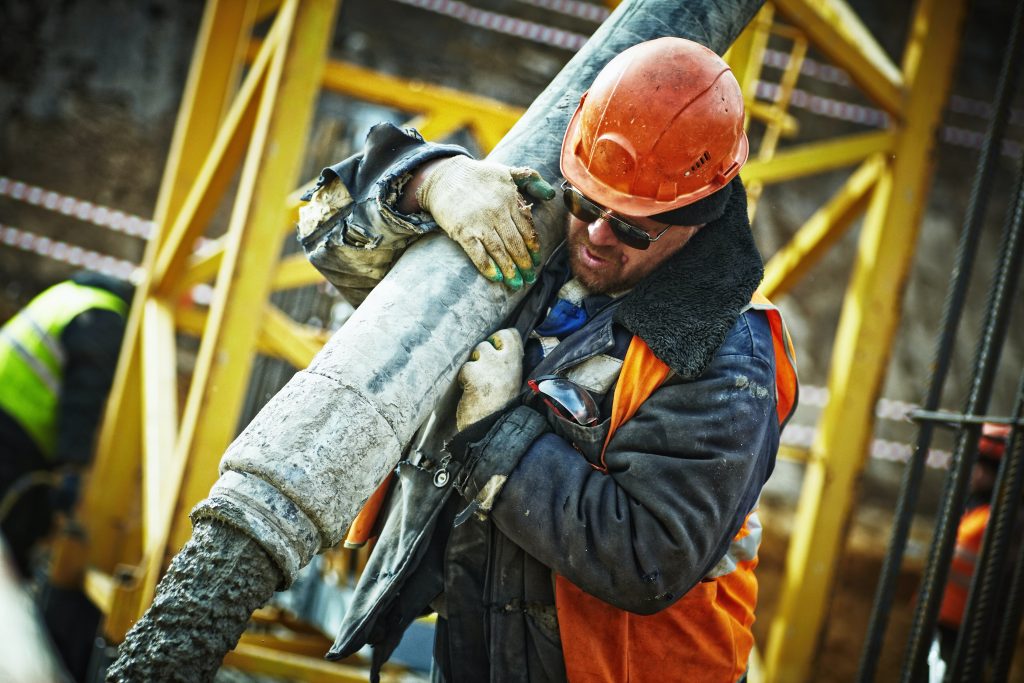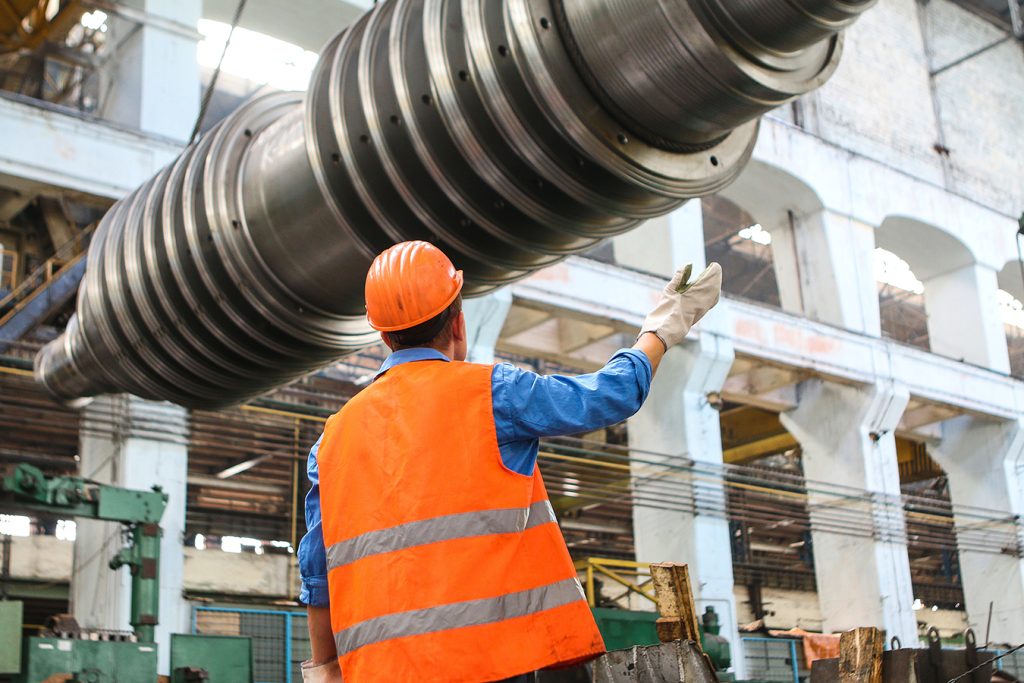|
Escuchar artículo
Getting your Trinity Audio player ready...
|

Maintenance costs are of great importance because they can have a significant impact on a company’s profitability and efficiency. If maintenance costs are too high, this can negatively affect the company’s ability to generate profits and compete in the marketplace. In addition, maintenance costs can also affect the safety and reliability of the company’s assets and equipment.
The proper industrial maintenance management control of the area’s costs is essential to optimize the company’s efficiency and profitability. This involves monitoring and controlling costs preventive and corrective maintenance over time, identifying areas for improvement and reducing costs. In addition, it is also important to consider maintenance costs when deciding which equipment and assets to purchase, as maintenance costs can vary significantly depending on the equipment or asset according to its complexity.

Failure to adequately control maintenance costs can have a significant impact on a company’s profitability with very negative effects that can arise from lack of control, order and follow-up:
Increased costs: If maintenance costs are not adequately controlled, they can increase significantly, which can reduce the company’s profitability and limit its ability to compete in the marketplace.
Downtime: If maintenance costs are not properly controlled, it can result in increased downtime of the company’s equipment and assets. This can negatively affect production, service and the company’s ability to meet customer demands.
Afectar la calidad de los productos o servicios: if preventive and corrective maintenance costs are not properly controlled, the quality of the company’s products or services can be affected. For example, if machinery is not properly maintained, it can result in defective products; if a critical piece of equipment fails to provide a service, this can lead to complications such as the shutdown of an important operation, fines or even loss of contracts.
Assets and equipment lifetime reduction: If maintenance costs are not properly controlled, it can lead to a reduction in the useful life of physical assets. This can result in higher costs in the long run, as the business will have to replace equipment ahead of schedule without a digital maintenance strategy like the organization’s use of a CMMS.
Increased safety risks: Lack of proper maintenance on equipment and assets can increase the risk of failures, accidents and injuries affecting each country’s H S E Q or OSHAS 18000 management ratings. If necessary repairs and replacements are not made, equipment and assets may not function safely, which can jeopardize the health and safety of employees, customers or anyone else involved in the service.

Non-compliance with regulations and laws: Companies may be required to comply with certain regulations and laws regarding the safety and maintenance management of equipment and assets. If the company fails to comply with these regulations and laws, it may face penalties, fines and loss of reputation.
Impact on image and reputation: If the company does not perform adequate maintenance on its equipment and assets, it can affect its image and reputation with customers, suppliers and the community in general. Lack of maintenance can be seen as a sign of negligence and lack of commitment to safety and quality.
Loss of business opportunities: If the company fails to properly maintain its equipment and assets, it may lose business opportunities due to a lack of ability to meet customer needs or comply with certain regulations and laws. Lack of maintenance can also affect the company’s ability to compete in the marketplace and attract new customers. On the issue of mechanical integrity, customers are demanding that their supplier has a CMMS with the purpose to ensure that the supplier or contractor will provide an incident-free service and that the assets he has placed in his hands will not cause outages and failures in the operation of the client’s critical areas.
What changes can be made in a company to control costs using the CMMS here?
To control maintenance costs using CMMS here (Computerized Maintenance Management System), some changes can be made in the company, including:
Identify equipment and assets: The first step is to identify the equipment and assets to be controlled through the CMMS here. This implies having a complete record of the equipment and assets, including their location, date of acquisition, warranties, calibration certifications, location maps, technical characteristics, dossier, among others.
Define maintenance procedures: It is important to define maintenance procedures for each equipment and asset, including maintenance intervals, specific tasks that are highly customizable and the technical body responsible for carrying out maintenance.
Establish a preventive maintenance plan: Preventive maintenance is a strategy to reduce equipment downtime and avoid costly failures. It is important to establish a preventive maintenance plan for each equipment and asset, and make sure that they are being carried out at the established intervals, through planning tools, time measurement, communicability, reporting and measurement of indicators provided by the maintenance software CMMS here.

Allocate adequate resources: Maintenance management using the CMMSHere requires allocating adequate resources, including personnel, materials, tools, additional or specialized services and budget. It is important to ensure that the resources are sufficient to carry out the work corresponding to the preventive maintenance plan..
Using CMMS here maintenance management software: Using CMMS here software allows you to track maintenance costs and maintenance history for each piece of equipment and asset. In addition, CMMS here software allows you to schedule maintenance tasks and generate maintenance reports.
Analyze the data: Using CMMS software here allows you to collect a large amount of maintenance data. It is important to analyze this processed data graphically or numerically to identify areas for improvement and make informed decisions about maintenance and cost management.
Staff training: It is important that maintenance personnel are trained to use the CMMS here. Proper staff training can improve the efficiency and effectiveness of maintenance processes.
Establish a tracking system: It is important to establish a system for tracking maintenance costs and maintenance management results using business indicators provided by the CMMSHere. This will allow the company to monitor progress and make adjustments when necessary.
Set objectives and goals: Setting specific objectives and goals for maintenance management can help the company focus on what is important and monitor progress. This may include maintenance cost reduction goals, downtime reduction goals, or maintenance efficiency improvement goals.
Improve maintenance planning and scheduling: Maintenance planning and scheduling can be improved by implementing the CMMS here. The platform allows the scheduling of maintenance tasks, which can help avoid unplanned downtime.

Improve inventory management: Inventory management is an important part of maintenance management. The CMMSHere can help the company to monitor the inventory of spare parts and materials, which can improve maintenance efficiency and reduce costs, for more information you can refer to the article on inventories: The ABC’s of Inventory Management in the Maintenance Area
What business indicators must be followed by management to achieve cost reduction in the maintenance area?
There are some cost performance indicators of maintenance management that a manager can follow to achieve cost reduction, some of the most important indicators are presented below:
- Total maintenance cost: This indicator measures the total cost of all maintenance activities in the company, including labor, materials, contracted services and other associated costs. Through the CMMS here, it is possible to obtain budgets executed in terms of time and thus be able to make more accurate budgets for the following periods, thus achieving more realistic profitability values for the business
- Maintenance cost per unit of production: This indicator measures maintenance cost per unit of production, which helps determine whether maintenance costs are increasing or decreasing relative to production.
- Unplanned downtime: This indicator measures the time that equipment and facilities are out of service due to unplanned failures, which can be an indicator of the effectiveness of preventive maintenance activities.
- Failure rate: This indicator measures the number of equipment and facility failures in relation to the amount of time they are in use. An increase in the failure rate may indicate that the equipment needs more preventive maintenance, CMMSHere allows you to visualize equipment failures with the most relevant information so you can perform root cause analysis and implement corrective actions that will reduce the likelihood of repeat failures, for more information on RCA analysis see e-book: CMMS here – Root Cause Analysis in Maintenance Management.
- Mean time between failures (MTBF): This indicator measures the average time between equipment and facility failures. An increase in M T B F may indicate that preventive maintenance activities are working well.
- Maintenance man-hours: This indicator measures the number of hours required to perform maintenance on equipment and facilities. An increase in man-hours may indicate that unnecessary maintenance activities are being performed or that the failure rate is increasing and requires corrective maintenance.
How to reduce the costs of maintenance logistics in your company?
Maintenance logistics refers to the activities and processes related to the planning, organization and execution of the maintenance of equipment and facilities. To reduce maintenance logistics costs in a company, the following steps can be taken:
Establish a preventive maintenance plan: A preventive maintenance plan helps prevent failures and keep equipment and facilities in optimal condition, reducing costs associated with corrective maintenance and unplanned downtime.
Use CMMSHere maintenance management software: maintenance management software helps to schedule and manage maintenance activities, reducing time spent on administrative tasks and improving efficiency.
Maintain a spare parts inventory: Maintaining a spare parts inventory helps minimize downtime by ensuring that necessary parts are available when needed, reducing costs associated with unplanned downtime and rush shipments.

Optimize work scheduling: Optimizing work scheduling can help maximize efficiency in performing maintenance tasks, reducing time spent on non-productive tasks and improving the utilization of maintenance technicians’ time.
Outsource certain activities: In some cases, it may be more cost effective to outsource certain maintenance activities, such as specialized equipment maintenance or instrument calibration, rather than maintaining in-house staff dedicated to these tasks, outsourcing maintenance requires tracking through CMMSHere, which provides the ability to monitor the vendor’s work, on time and on schedule with the required procedural quality.
How can predictive maintenance with CMMSEdge IoT help your business?
Predictive maintenance is a maintenance strategy that uses monitoring technologies to predict equipment failures and avoid costly downtime. Through the latest technology provided by the CMMSEdge IoT, the organization can achieve cost reductions by anticipating failures through maintenance based on operating conditions, thus reducing costs:

Early identification of failures: Constant monitoring of equipment allows potential failures to be detected early, allowing preventive maintenance to be scheduled before a failure occurs that could cause costly downtime.
Maintenance scheduling: By using condition monitoring predictive maintenance, maintenance can be scheduled based on actual need, helping to reduce costs by avoiding unnecessary maintenance and ensuring that equipment is available when needed..
Reduced labor costs: By monitoring equipment and scheduling maintenance based on actual needs, you can reduce the time and labor cost spent on maintenance tasks.
Reduced spare parts costs: Predictive maintenance can help minimize the cost of spare parts by enabling the replacement of components before costly failures occur.
Reduced downtime costs: Constant monitoring of equipment and scheduling of preventive maintenance helps avoid costly unplanned downtime, which can significantly reduce business costs.
More information about our predictive maintenance software can be found in the ebook: CMMSEdge IoT – Importance of Real-Time Asset Monitoring.
Would you like to know and learn about CMMSHere, contact us, or leave your information in the chatbot of our site so that a representative of our company can contact you as soon as possible.





No comment yet, add your voice below!